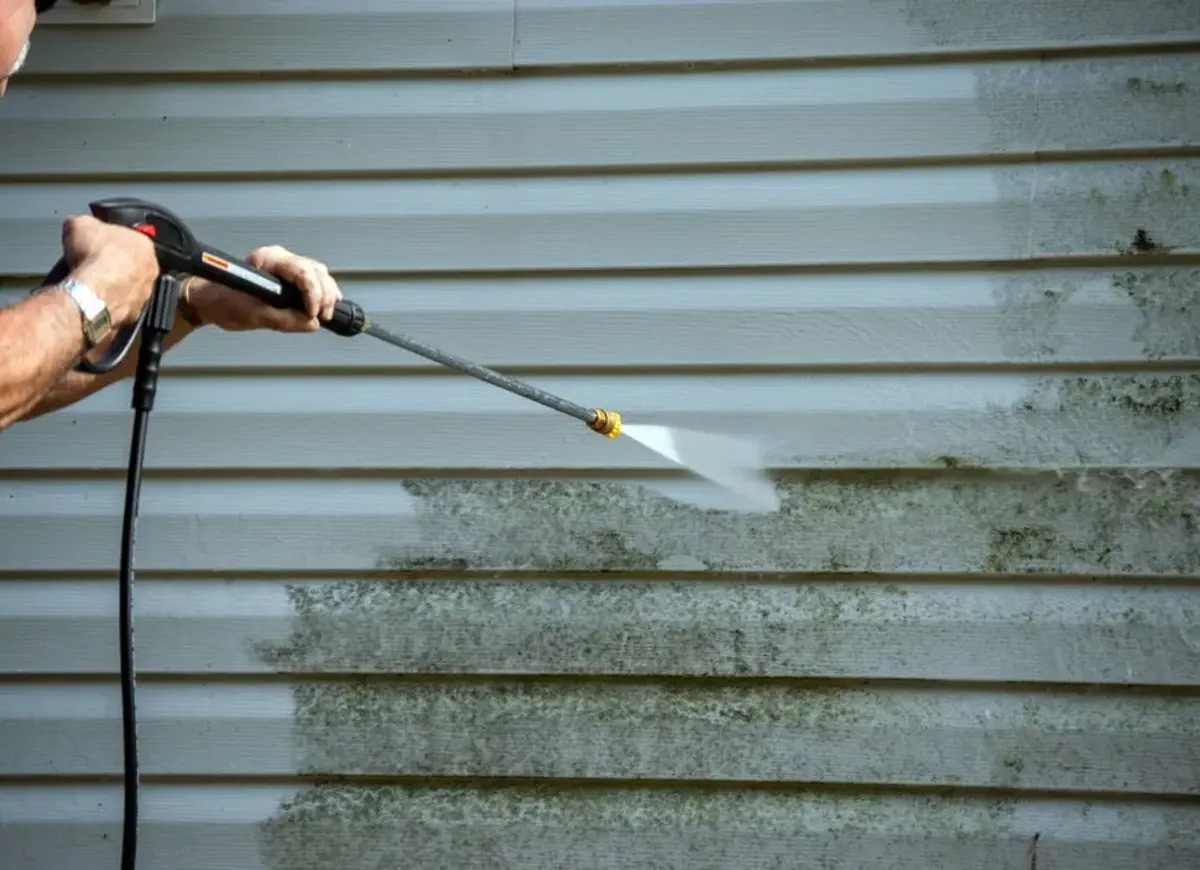Maintaining a home’s exterior enhances curb appeal, extends longevity, and boosts value. From restoring vinyl siding restorer to fixing gutters and downspouts, a proactive approach to upkeep keeps homes looking fresh while protecting against weather and wear. This guide will walk you through essential steps to revive your siding and address gutter issues effectively.
Why Restore Vinyl Siding?
Over time, vinyl siding can lose its vibrant appearance due to harsh weather, UV exposure, or accumulated grime. Restoring vinyl siding not only rejuvenates its look but also shields the exterior from potential damage. By maintaining your siding, you create a protective barrier against moisture and mold.
Assessing Vinyl Siding Condition
Before beginning restoration, evaluate the current condition of your siding:
Examine for Cracks or Breaks: Check for any noticeable cracks, breaks, or chipped pieces, especially around corners.
Inspect Fading and Discoloration: Sun exposure can fade siding, making it look worn out. Assess which areas need the most attention.
Identify Mold or Mildew Growth: Green or black patches indicate mold or mildew, particularly in shaded or damp spots.
Steps to Restore Vinyl Siding
- Clean Thoroughly
The first step in vinyl siding restoration is a deep cleaning. Dirt and mildew accumulate over time, dulling its finish.
Use a Pressure Washer: For tough grime, a pressure washer is your best option. Keep it at a safe distance and work from top to bottom to avoid streaks.
Mix a Cleaning Solution: A blend of water, white vinegar, and a mild detergent effectively lifts dirt and grime. Apply with a soft-bristle brush for more delicate areas.
Rinse Off with Water: After scrubbing, rinse the siding with a garden hose, ensuring all cleaner residue is removed.
- Restore Color with Siding Restorer
Siding restoration products can bring faded vinyl back to life:
Apply a Restorer Solution: Choose a restorer compatible with vinyl, then apply using a sponge or cloth. This solution deepens the color and gives a polished finish.
Opt for a UV-Resistant Coating: Protect your siding from future fading by applying a UV-resistant solution.
- Paint for a Fresh Look
If restoration alone doesn’t yield the desired results, painting vinyl siding is an option:
Use Vinyl-Safe Paint: Look for exterior-grade paint labeled “vinyl-safe” to ensure flexibility and adhesion.
Pick Lighter Colors: Dark colors can cause siding to warp. Lighter shades prevent excessive heat absorption, maintaining the vinyl’s structural integrity.
Apply Two Coats: For optimal coverage, apply two coats, allowing each to dry completely. A brush or roller provides an even application, although a sprayer is suitable for larger areas.
Understanding Gutter and Downspout Issues
Gutters and downspouts are essential for directing rainwater away from your home’s foundation. Clogged or damaged gutters can lead to costly repairs due to water damage. Regular inspection and repairs keep gutters working efficiently.
Inspecting Gutters and Downspouts
Conduct a thorough check every season to identify potential issues:
Check for Clogs: Leaves, debris, and dirt can clog gutters, causing overflow during heavy rains.
Inspect for Leaks or Cracks: Over time, gutters may crack or develop leaks, particularly at the seams.
Assess Downspout Positioning: Downspouts should direct water at least five feet away from the foundation to prevent pooling.
Steps to Fix Gutters and Downspouts
- Clean Out Debris
Gutter maintenance begins with removing debris that could clog the system:
Clear Out Leaves and Dirt: Use a scoop to remove leaves and debris by hand. Ensure the gutter is entirely clear to prevent buildup.
Rinse with a Hose: After cleaning, rinse gutters with a garden hose to ensure proper water flow.
- Repair Leaks and Cracks
Leaks in gutters can be fixed quickly with the right materials:
Seal with Gutter Caulk: For small cracks, use a waterproof gutter caulk. Apply it to dry, clean surfaces for maximum adhesion.
Install Gutter Patches: For larger holes or cracks, a patch kit is ideal. Sand the area, apply the patch, and coat it with sealant to prevent leaks.
- Reinforce Gutters with Hangers
Loose gutters sag, reducing their effectiveness:
Install Additional Hangers: To support weak spots, add hangers at intervals of 18 to 24 inches along the gutter.
Use Screws for Stability: Secure hangers with stainless steel screws, ensuring they’re tight to prevent sagging.
- Adjust Downspouts
Downspouts should direct water away from the foundation:
Use Extensions: Attach downspout extensions to carry water away from the house.
Install Splash Blocks: Placing splash blocks under downspouts helps disperse water further, preventing soil erosion near the foundation.
Maintaining Gutters and Siding
Regular maintenance is essential for longevity:
Seasonal Gutter Cleaning: Clean your gutters and downspouts at least twice a year, especially after the fall season when leaves accumulate.
Siding Inspection Post-Storms: Check for any damage after storms or extreme weather, as high winds and hail can chip or break vinyl siding.
Routine Power Washing: Power washing once a year keeps siding clean and free of buildup.
When to Call Professionals
While many of these repairs can be done yourself, some situations require professional help:
Extensive Mold or Water Damage: If water has seeped into the walls or there’s extensive mold growth, contact a professional to assess and repair the damage.
Severe Gutter Sagging: If gutters are severely sagging or pulling away from the house, a professional installation may be necessary to ensure proper alignment.
Large Siding Sections in Need of Replacement: For significant siding damage, a siding contractor can replace sections and ensure a seamless appearance.
Conclusion: Protecting Your Home’s Exterior
Restoring vinyl siding and fixing gutters and downspouts not only enhances a home’s appearance but also provides critical protection from weather-related damage. Regular maintenance keeps these essential elements functional and extends their lifespan. Following these tips, you can ensure your home remains protected and visually appealing year-round.
